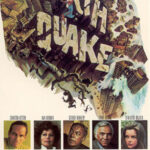Whether you’re preparing for a natural disaster, long-term job loss, another Depression, or the Zombie Apocalypse, food storage is a hot topic right now. Modern technology has enabled a variety of emergency preparedness options, eliminating the need for home-canning and freezing methods, but with that variety also comes confusion. Freeze-dried and dehydrated foods are the new stars of the survivalist food storage, and each has specific contributions to your long-term food storage plans.
Process
Essentially, freeze dried foods are a type of dehydrated food. Both methods remove 98% of the food’s original moisture, which allows for longer shelf lives. During standard dehydration, heat is used to remove moisture from foods. This can be done three ways: air-drying, sun-drying or kiln-drying. Home dehydrating machines usually use hot air. Other home dehydration fans often use sun-drying by exposing foods to full sun until dried, similar to Native American techniques. Kiln drying bakes foods like pottery without actually cooking the foods.
Freeze dried foods are first flash-frozen under extremely cold temperatures, then dehydrated using a vacuum process to suck out remaining moisture. Foods stay in a vacuum chamber with temperatures around -50 degrees Fahrenheit while a small amount of heat is applied to the foods so the water evaporates without actually turning back to its liquid form. The end product can be stored room temperature and still maintain a long shelf life like traditionally dehydrated foods.
Shelf Life
Freeze dried foods have a shelf life twice as long as dehydrated foods: 25 years versus 12 years respectively. Once the foods have been opened, breaking the special seal, shelf lives depend on storage conditions and usually a matter of months. To get the optimum shelf life for your food store, keep food sealed until you’re ready to use it. Place foods in dry, dark areas where the temperature stays in the low 70s. Remember that freeze dried foods require more space than dehydrated ones. You can get more food for your money and your storage space by going with dehydrated foods.
Flavor and Nutrition
Hands down freeze dried foods will provide the best texture and flavor of the survivalist food stores. Because minimal heat is applied, the foods, especially fruits and vegetables, retain the most nutrients over dehydrated foods. Studies by the American Institute for Cancer Research show freeze-dried foods retain high levels of phytochemicals and folic acid. While fresh and frozen fruits and vegetables have the highest nutrition value, especially for vitamins that break down easily like Vitamin C, freeze-dried foods retain more vitamins than dehydrated foods.
Cost
Price can sometimes be the only motivating factor in choosing a food storage technique. Due to the process, freeze-dried foods are considerably more expensive than dehydrated. A 1-pound can of freeze-dried sweet and sour pork can cost you around $40 full-price, while a 2-pound can of taco meat costs around $15. The variety of full meals, like turkey tetrazzine and lasagna, is greater with freeze-dried varieties, while dehydrated producers focus more on isolated ingredients like powdered milk and eggs, meat crumbles or vegetables.



